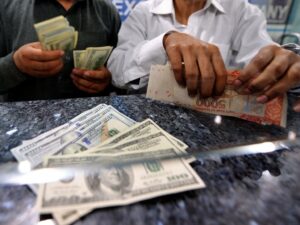Slows the growth of global oil demand next year, soaring food prices, and concerns of recession in large oil importing countries are determined to slow down economic growth in the Middle East, whose main oil producers enjoy the fortune of oil revenue and the highest growth for years. Economies in the Arabic Gulf States that are part of the Gulf Cooperation Council (GCC) —Bahrain, Kuwait, Oman, Qatar, Saudi Arabia, and the United Arab Emirates (UAE) —Eare on track for the Fastest Economic Growth in years and for for Budget surplus, for some of them the first surplus in a decade.
GCC growth is estimated to be 6.2% this year, according to the Reuters of Economist’s opinion that revised the estimated economic growth of 5.9% from a similar poll in April.
However, growth will slow down next year, to 3.8% in all GCCs, economists are calculated.
The expansion or worsening of the war in Ukraine can bring up the global economy into the recession, pushing oil prices to fall sharply even if the oil supply remains limited, regarding regional growth and fiscal balance,” Essaf Al-Matrouk, an economist assistant at NBK, told Reuters.
The price of three -digit oil has accelerated economic growth in the main Middle Eastern oil exporters, including the largest crude oil exporters in the world, Saudi Arabia. Oil revenue soared, strong fiscal balances, and growth – driven by higher oil prices and higher oil production because OPEC+ rolled back the output cutting – being revised. In addition, inflation is not as high as Middle Eastern oil exporters such as in the United States and Europe, which protects the bay economy to a certain extent from global inflationary pressure.
The Saudi economy, for example, was determined for a stronger performance this year than previously expected amid the high oil price, International Monetary Funds (IMF) said in April, revising the estimated growth to 7.6% for 2022, up 2.8 up The percentage point of the previous estimate.
For the first quarter, the Saudi Arabian economy grew by 9.9% every year, the highest growth rate since 2011, the general authority for statistics said, connecting growth with “high increase in oil activities,” which jumped 20.3% from year to year . In addition, Saudi Arabia ordered a budget surplus of $ 15.3 billion (57.491 billion Saudi Riyals) in the first quarter, the Ministry of Finance said in May. Oil revenue jumped by 58 percent to $ 49 billion (183.7 billion Saudi riyals) between January and March, when oil prices jumped above $ 100 per barrel, the Ministry of Finance data showed.
For the whole of 2022, the Saudi economy will grow by 7.6%, the fastest growth speed in more than a decade, according to Reuters’ opinion. This is in line with the IMF projection from April.
Slowdown in 2023
However, next year, the rate of growth in Saudi Arabia and GCC will be divided in two, with a growth of 3.8%, it is expected that GCC countries and 3.3% for Saudi Arabia with Reuters polls. The IMF also predicts slower growth in Saudi Arabia next year, by 3.6%.
If the concern of recession in Europe or the US is realized, economic growth in the Middle East can be even slower because the recession will curb the growth of global oil demand or even cause a decrease in consumption from year to year. The bay economy, depending on oil income, will feel the potential for lower demand and lower oil prices once.
That is why the IMF and the fortune teller and other major economic agencies have advised Saudi Arabia and all Middle Eastern oil and gas exporters for years to accelerate economic diversification and not rely on the nature of the Oil Nomplok Fortune Cycle.
Fiscal policy must focus on managing higher oil revenue on a sustainable manner,” IMF said last month about the Saudi economy.
Inflation is much lower in Saudi Arabia and other large oil exporters than the largest consumer price jump in the US in the US and many countries in Europe are good for the Middle East economy now, analysts said.
In Saudi Arabia, headline inflation was determined to speed up in the second half of 2022, but it will still be contained in the average 2.8 percent in 2022 as US dollars who respected where the Saudi Riyal was pegged, closed with the price of gasoline, and subsidies on wheat wheat Assistance contains pressure from the supply side shocks, IMF said in June.
Although the growth is expected to be slower next year, sovereign views in the Middle East remain “to improve,” the latest view of Fitch Ratings. The Rating Board revised global sovereign credit conditions to neutral” from “improved,” due to the impact of Russian invasion to Ukraine and due to sanctions on geopolitical risks, trade and capital flow, and economic growth and inflation.
The Middle East and North Africa (Mena) are the only regions that maintain the upgraded sector views assigned at the end of 20121. The rulers of oil exporters will register public finances that are much stronger and growth in 2022, although the economic picture will be far more challenging Outside the Bay Cooperation Council, “Fitch Ratings said at the end of last month.




